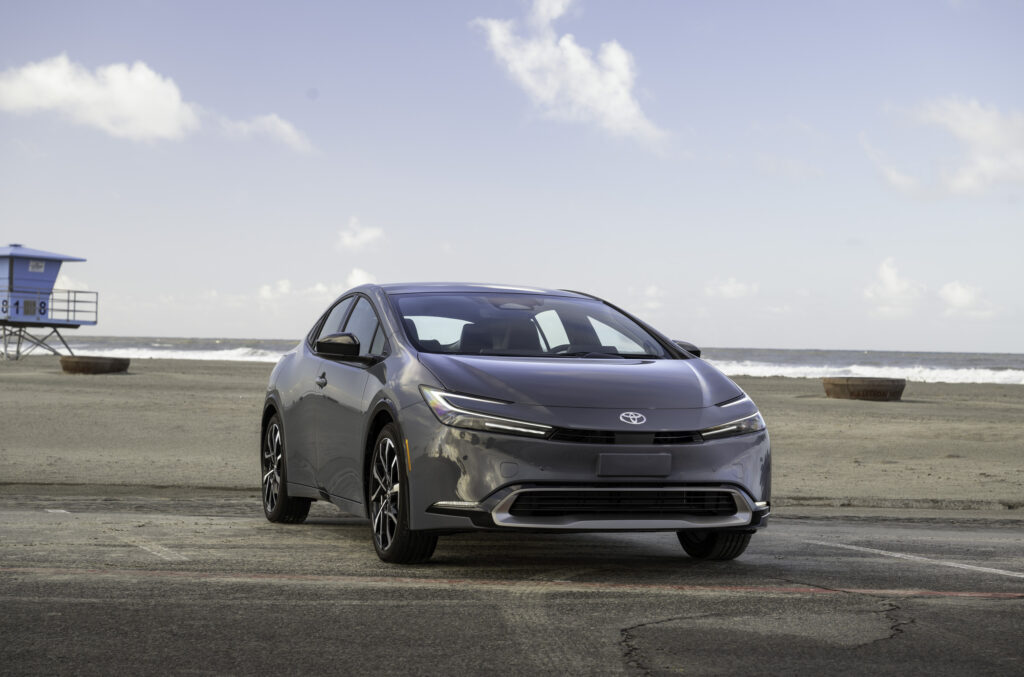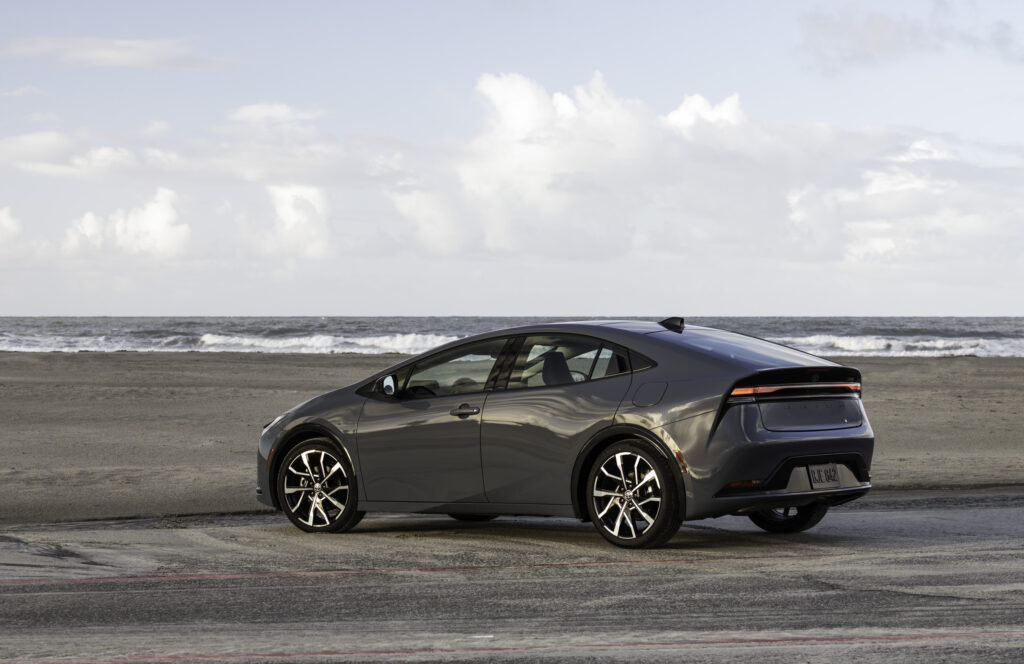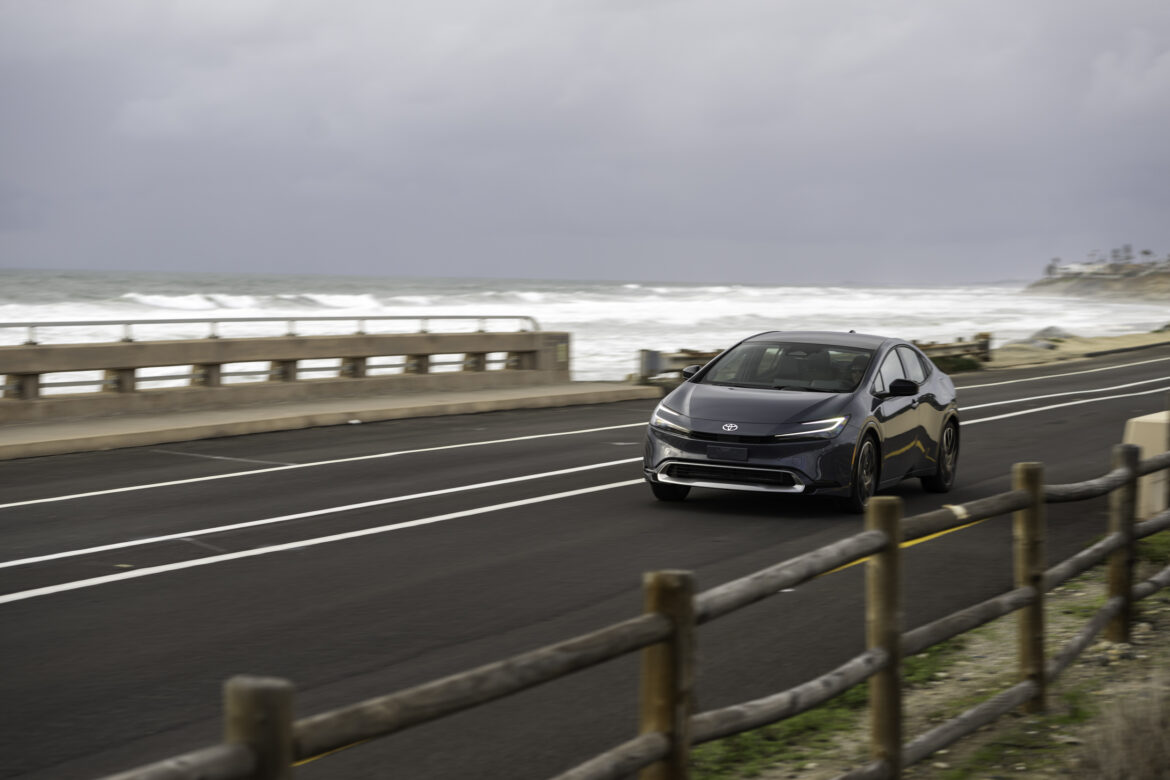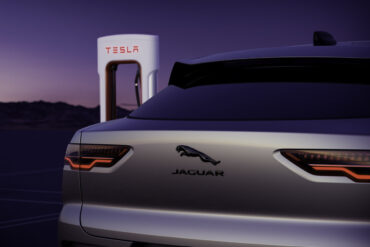The 2023 Toyota Prius emerges as a reimagined five-door hatchback, symbolizing a new era, potentially the final one, for hybrid vehicle technology. Once an undisputed champion that achieved iconic status, the Toyota Prius, along with the Prius Prime plug-in hybrid, mirroring our test vehicle, now faces competition from a spectrum of contenders.
These include hybrid variations of the Kia Niro and Toyota Corolla, as well as the Hyundai Elantra. Furthermore, it contends, whether explicitly stated by Toyota or not, with budget-friendly EVs like the Nissan Leaf and Chevy Bolt EV.
Renowned not only for its fuel efficiency but also for its devoted fanbase, the Prius has remained at the forefront of environmentally conscious trends since its initial launch in 2001. The latest iteration seems to depart from several generations of Prius design evolution, all for the better.
However, it continues to enhance the driving experience of this enduring hybrid model without compromising its fuel efficiency. This synergy between improved driving dynamics and sustained high fuel economy ensures the Prius maintains its status as a stalwart choice for eco-conscious drivers.
DESIGN

In 2023, Toyota’s Prius has captured substantial attention for its impressive appeal, showcasing a seamless preservation of its family heritage’s distinguished design traits from every perspective. Departing from its previous shape, the latest Prius version brings forth a remarkable and invigorating look.
Through the implementation of the updated platform, there is a notable decrease of 2.0 inches in height, coupled with an augmentation of almost one inch in width. This alteration completely revamps the initial egg-like form into a more refined wedge shape. Our hands-on experience involved taking the Prime model for a spin, available with an exterior finish in the shade of Guardian Gray.
Key design features include the gracefully flowing running lights that trace the contours of the hood. In a shift from recent models characterized by prominent grilles, the new Prius embraces a minimalist approach. It incorporates a modest lower grille that harmonizes with the car’s electric identity.
Toyota achieves a lower hood profile by relocating the hybrid’s high point to the B-pillar, which also results in an extended windshield that gently slopes before curving downward to a more refined rear hatch. A distinct body line runs parallel to the roofline, originating beneath the front wheel, sweeping over the rear wheel, and extending across the tail, culminating in a comprehensive light bar.

Substituting the former split-glass hatch arrangement, a new design has taken its place, featuring the prominent exhibition of the “Prius” label in bold block letters spanning the rear section. During our assessment of the Prime trim, an optional solar charging roof emerged as an enticing addition, offered at an extra cost of $610.
Included in this trim is the Advanced Technology Package, available at a cost of $1,085, and encompassing functionalities like Advanced Park and the Panoramic View Monitor.
Upon entering the Prius, one notices a conventional instrument cluster positioned at the base of the windshield. The driving position offers a slightly more reclined orientation compared to most compact sedans. Unlike its predecessor, the new Prius provides a refined visual experience, boasting a less cluttered interior that might even divert attention from its innovative exterior design.
The center console is positioned higher and features a traditional shifter, a departure from the layout seen in previous Prius models. The dashboard intentionally sits lower than the surrounding beltline, contributing to an air of understated normalcy.
PERFORMANCE

The recent redesign of the vehicle has led to significant improvements in its performance aspects as well. One noticeable change involves the expansion of the four-cylinder gasoline engine’s size, growing from 1.8 liters to 2.0 liters. This adjustment is accompanied by an increase in the battery capacity, which has risen from 8.8 kilowatt-hours to 13.6 kWh.
It’s important to note that the Prius Prime remains distinctively offered with front-wheel drive, setting it apart from the standard Prius that presents the option for all-wheel drive.
With the system now producing a combined power output of 220 horsepower, a significant boost from the earlier 121 hp, Toyota’s anticipated acceleration metric for zero-to-60 mph vividly showcases this power surge. The acceleration time has been reduced from the previous 10.2 seconds to an impressive 6.6 seconds.
Moreover, the transformation of the Prius Prime is evident as it has shifted from being a challenge during highway on-ramps to displaying more characteristics akin to an electric vehicle rather than a hybrid. In contrast to certain plug-in hybrid models, it can seamlessly blend into regular traffic without activating the gasoline engine.
Generated electric power meets the demands for various acceleration requirements, ensuring a pleasurable driving journey. The effective fusion of gasoline and electric energy in hybrid mode showcases impressive execution, delivering a delightful performance, although it falls short of replicating the impeccable sensation offered by a fully electric drive.
While the Prius Prime is not classified as a sports car, it maintains stability around corners. The tuning of the chassis strikes a balanced equilibrium between minimizing excessive body movement during changes in direction and absorbing shocks to ensure passenger comfort.
The driving dynamics provide a relaxed experience, and while the vehicle doesn’t encourage aggressive cornering, the new Prime surpasses the expected performance commonly associated with the Prius model.
VERDICT

At CarFanaticsBlog, we spent a week putting the Prius Prime to the test. The vehicle is available at an MSRP of $39,170, and the particular model we had the opportunity to experience was listed with a total price of $43,088.
Competition
Kia has introduced the Niro, a well-equipped vehicle available in hybrid, plug-in hybrid, or electric hatchback variations, each showcasing a distinctive design.
On a different note, the Hyundai Elantra Hybrid Blue boasts an impressive combined rating of 54 mpg. However, it’s important to acknowledge its limitations, which include an exclusive front-wheel-drive setup and a trunk.
Shifting our focus to the realm of electric vehicles, the Chevrolet Bolt presents an appealing option with a comparable price point. Nevertheless, it’s noteworthy that Chevy has announced the discontinuation of the Bolt EUV and EV by the end of 2023, which should be taken into account.
In contrast, the Toyota Prius has undergone significant enhancements. These include a standout design and improved performance that not only set it apart from its rivals but also dispel the notion of sluggishness.
For those prioritizing practicality, Toyota offers two alternative hybrid options. The Toyota Corolla Hybrid comes with a more budget-friendly starting price, the option for all-wheel drive, and greater suitability for passengers requiring generous rear seat space.
Similarly, the Toyota Corolla Cross enters the scene with a taller crossover configuration while maintaining an impressive hybrid efficiency of over 40 mpg.
Directly rivaling the Corolla Cross is the Kia Niro hybrid, which not only competes head-to-head with its counterpart but also boasts a high-quality interior, particularly given its enticing starting price that falls below $30,000.
The Hyundai Elantra Hybrid provides an exhilarating driving experience compared to the Prius. It stands out with a distinctive and attractive design complemented by an extensive array of features it offers. Furthermore, the Prius holds a slight edge in terms of its overall performance.


